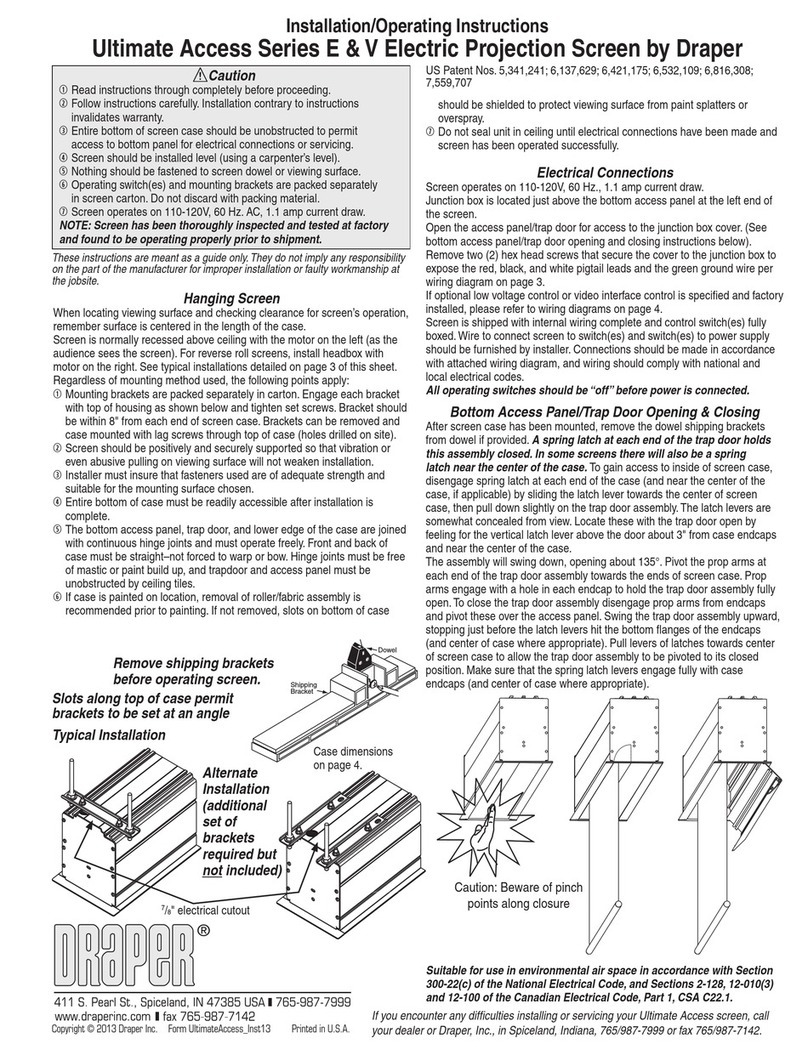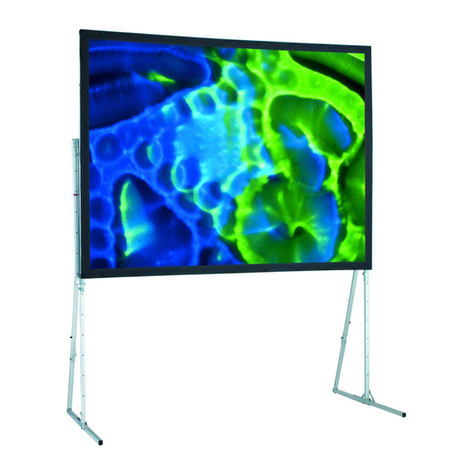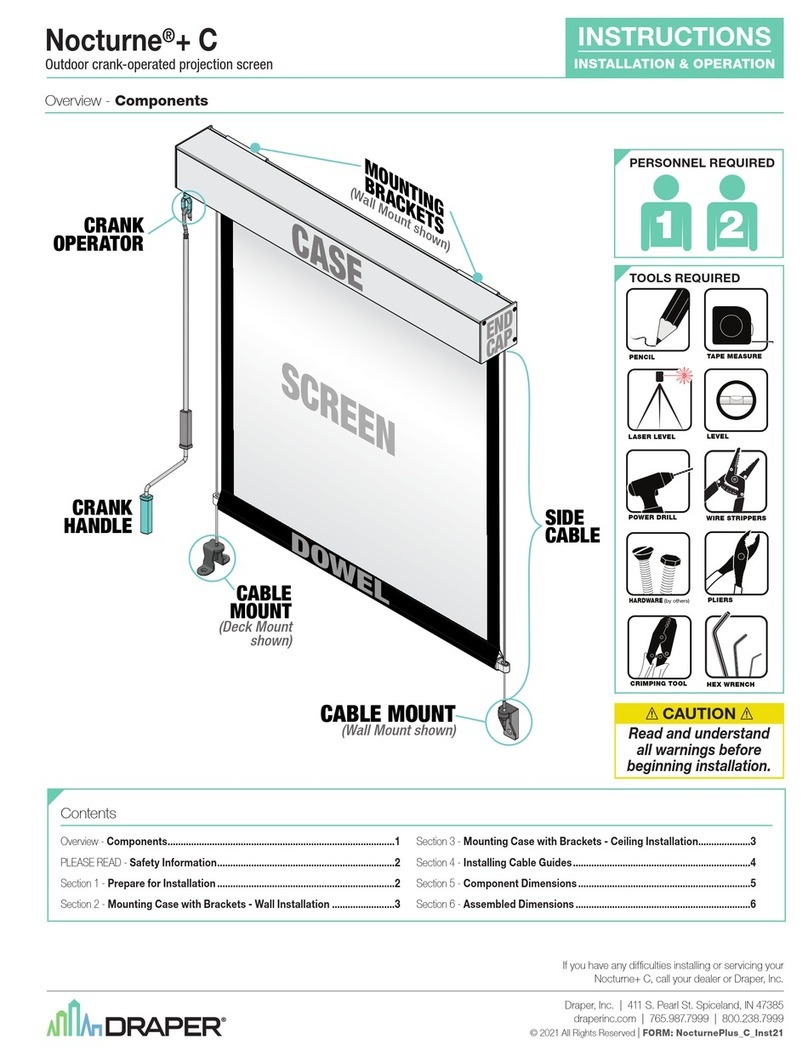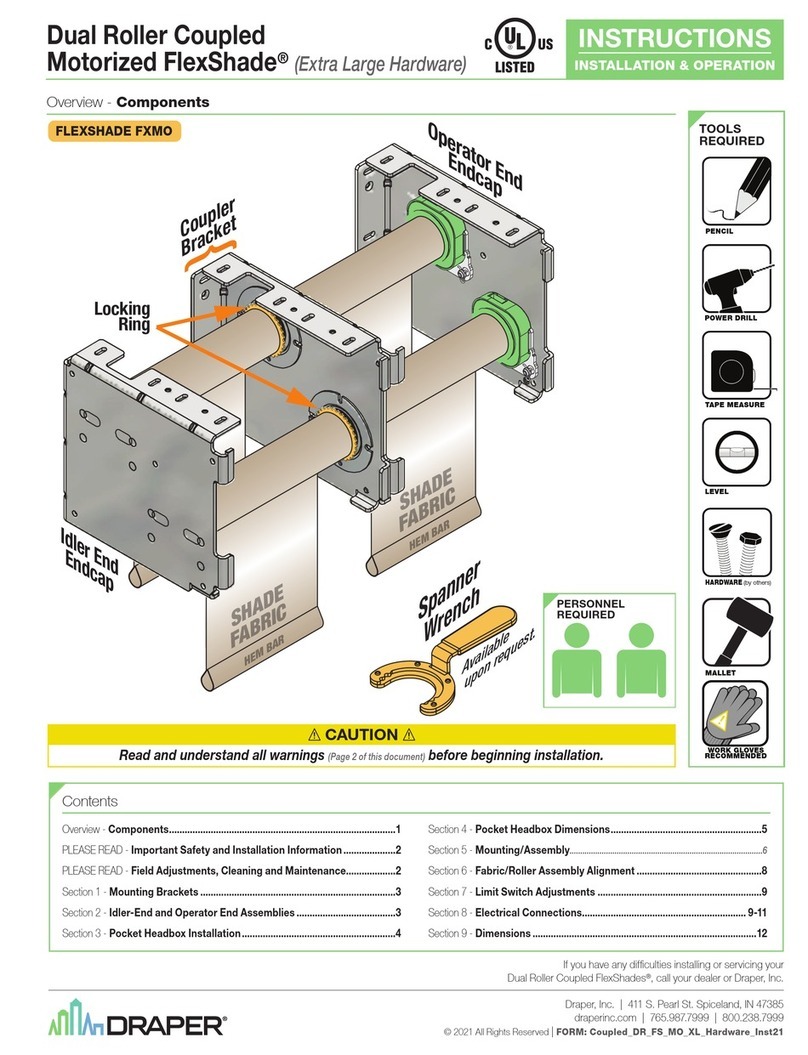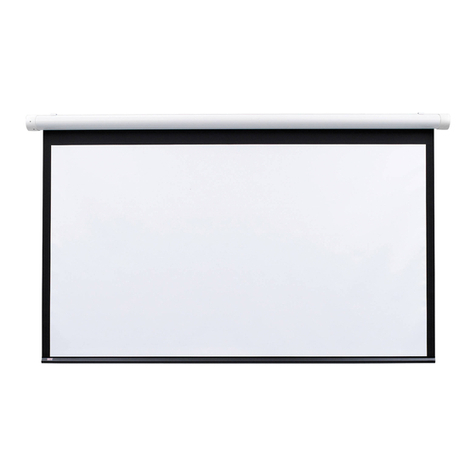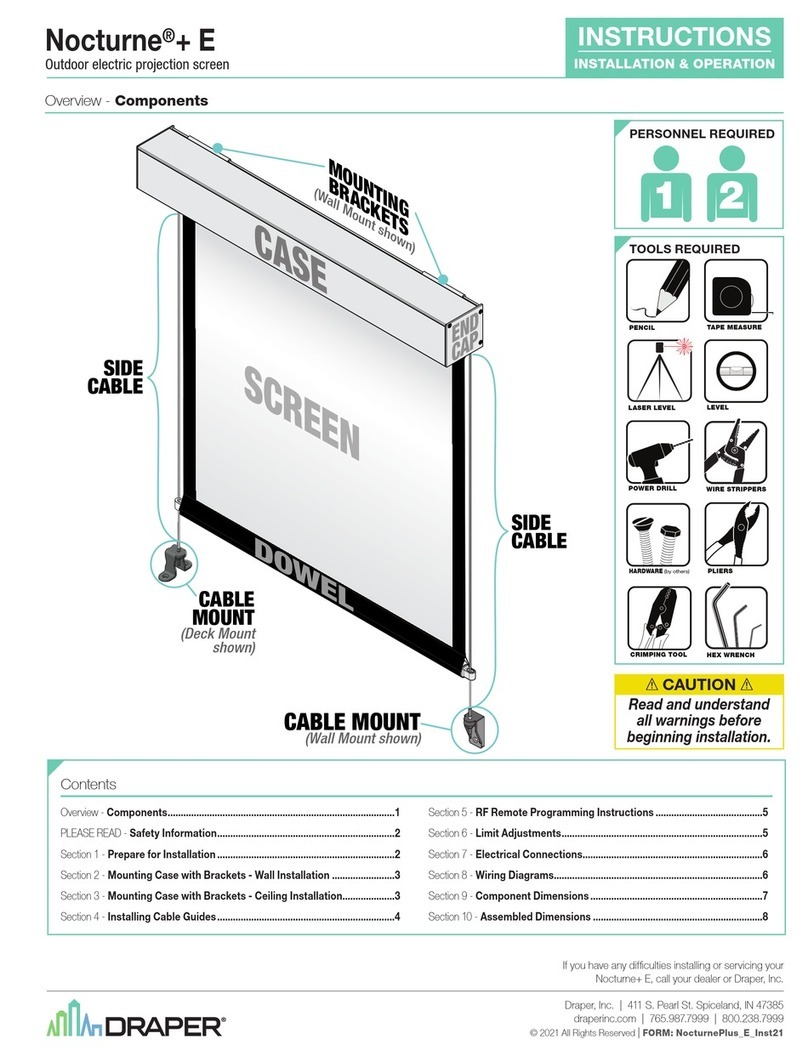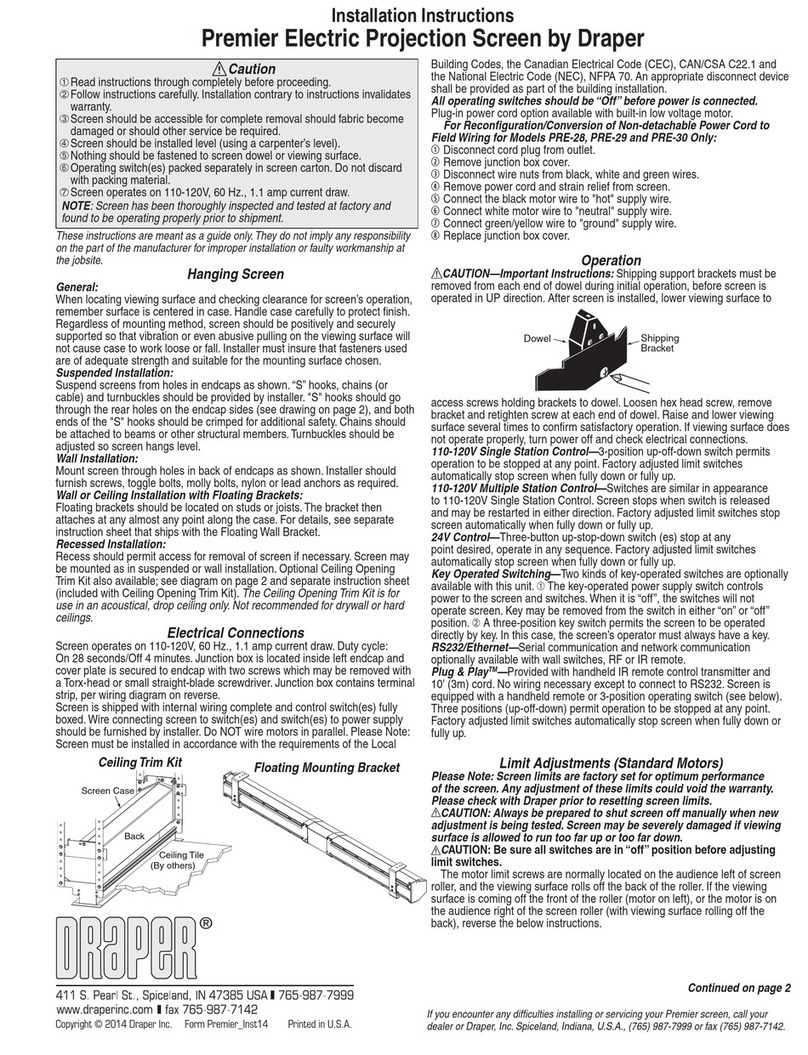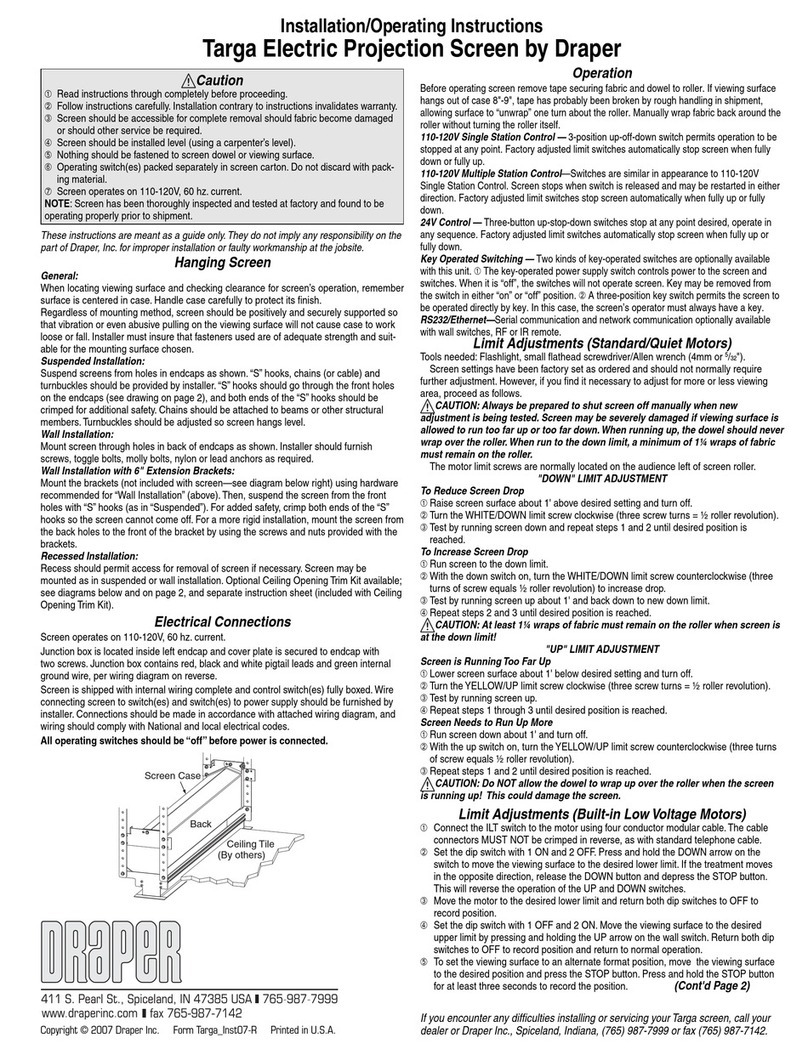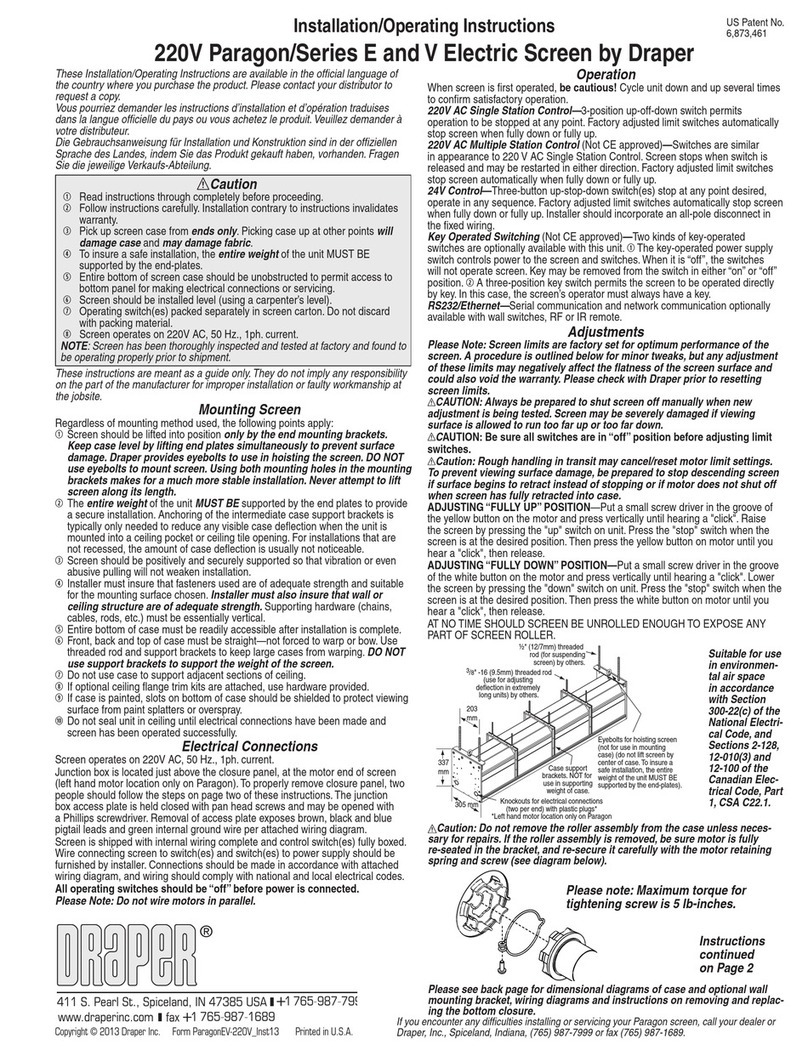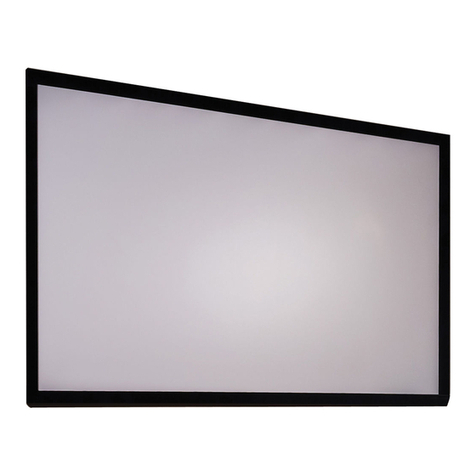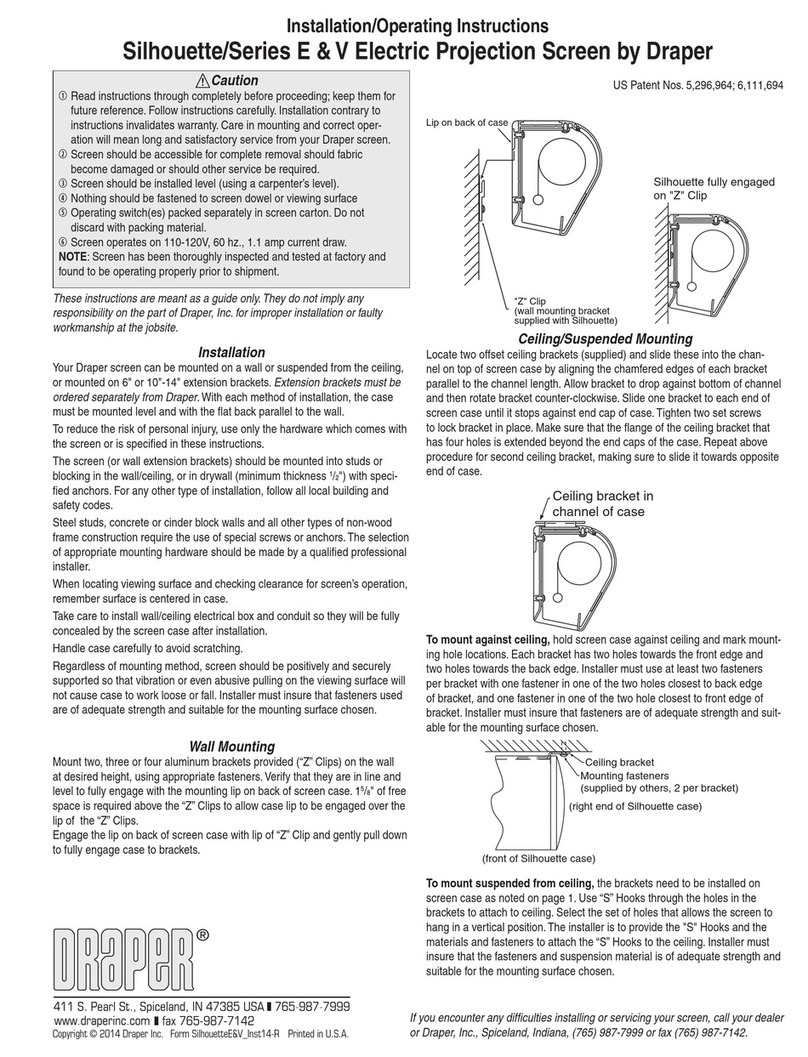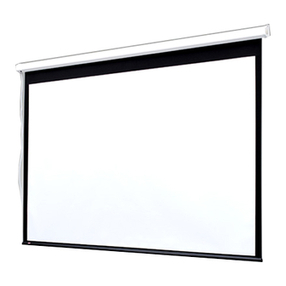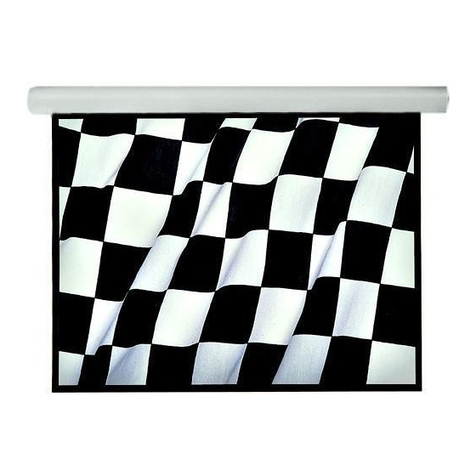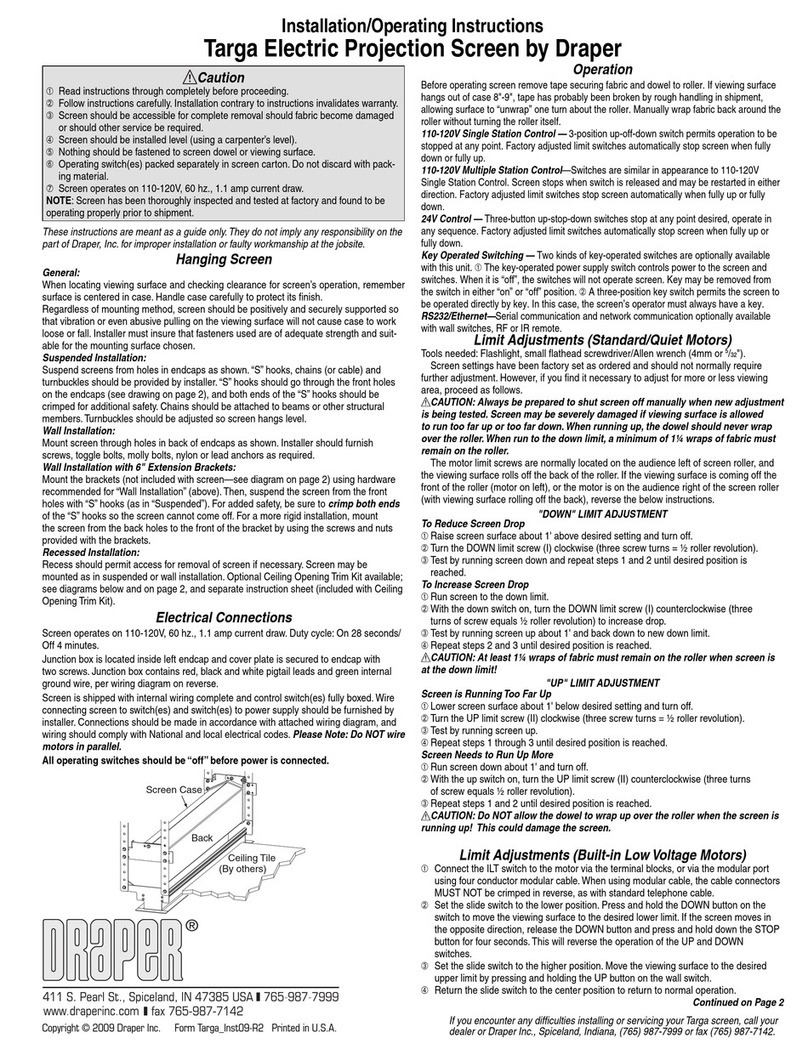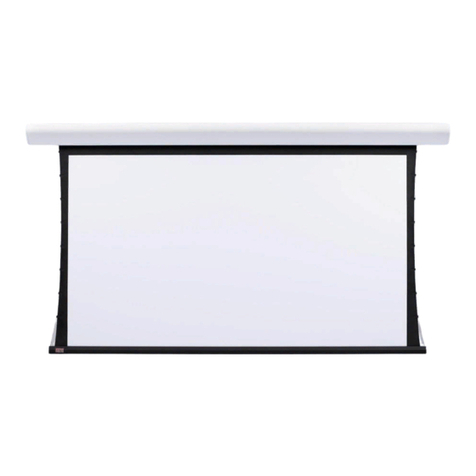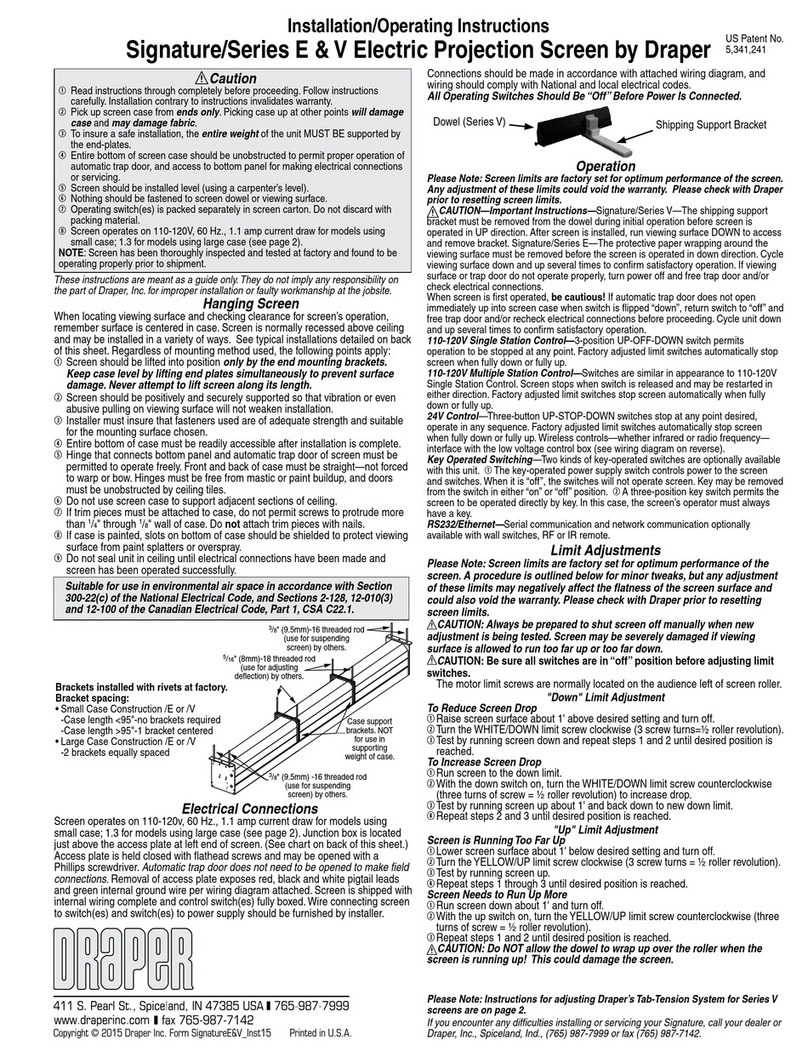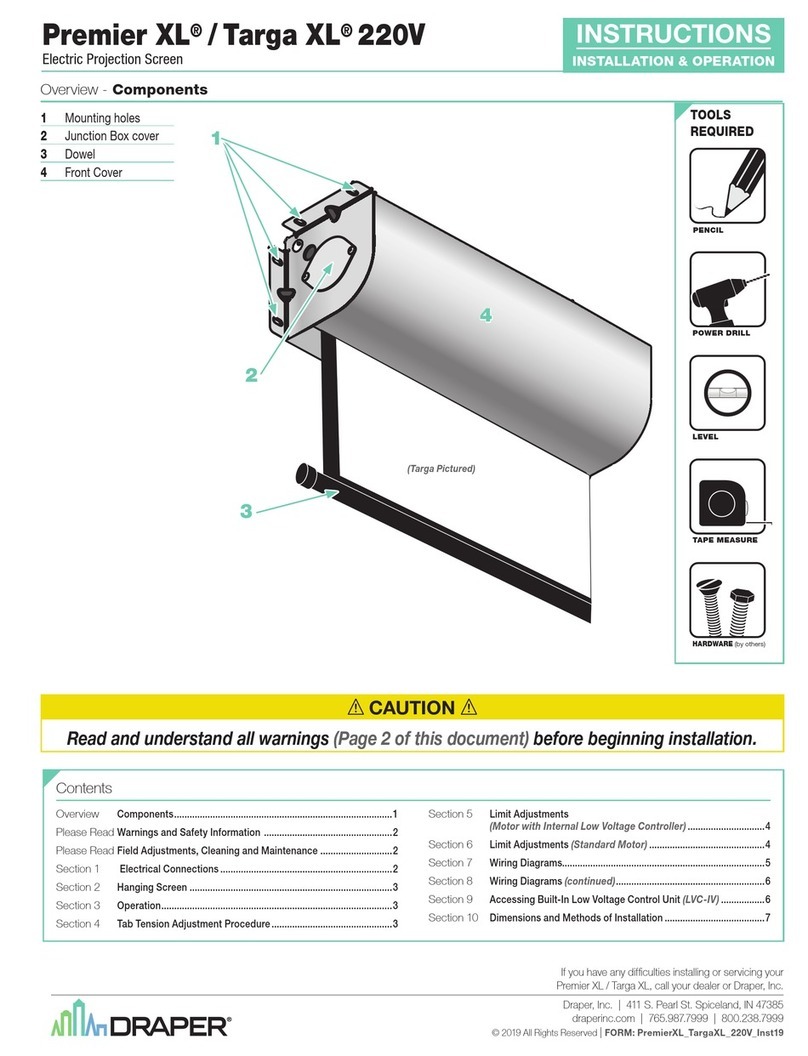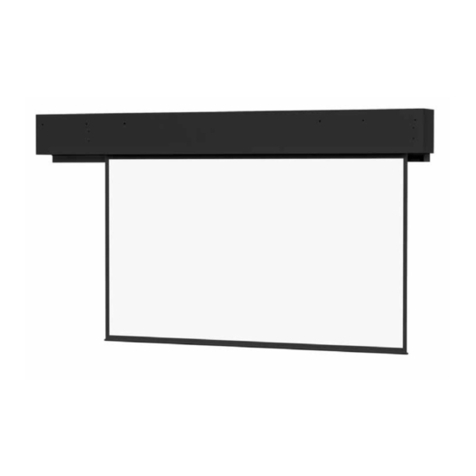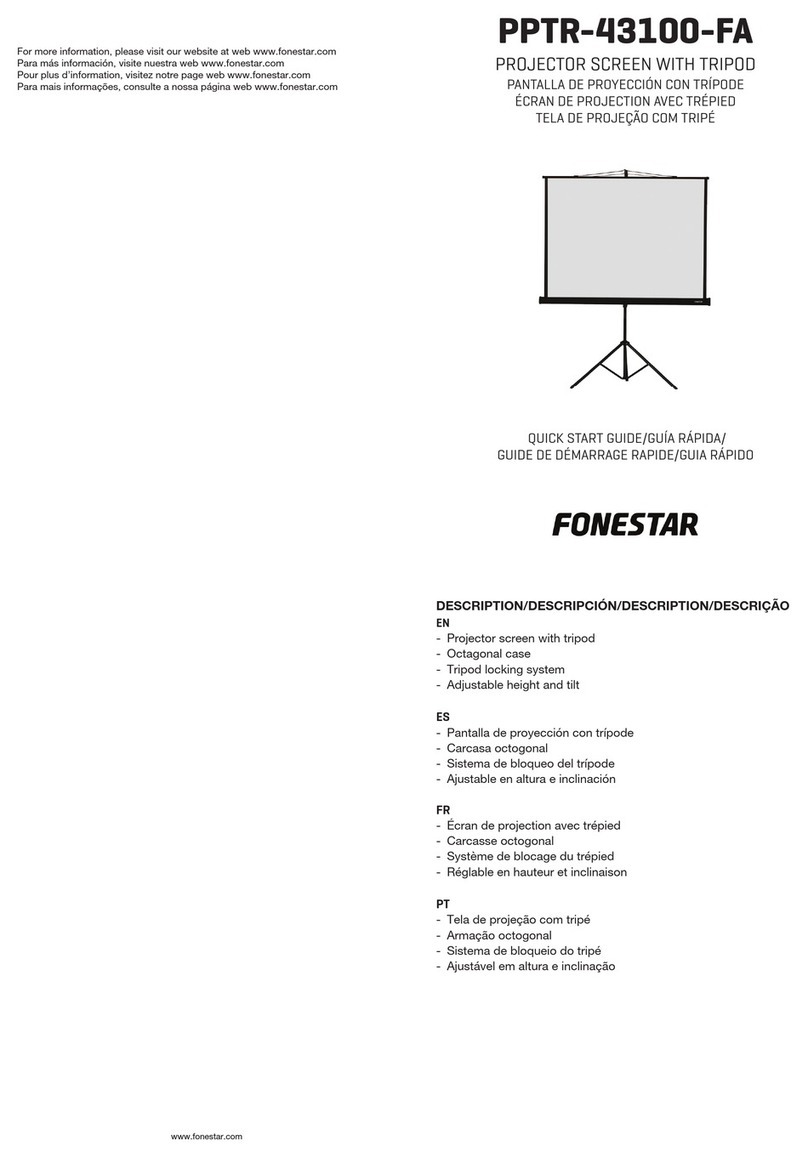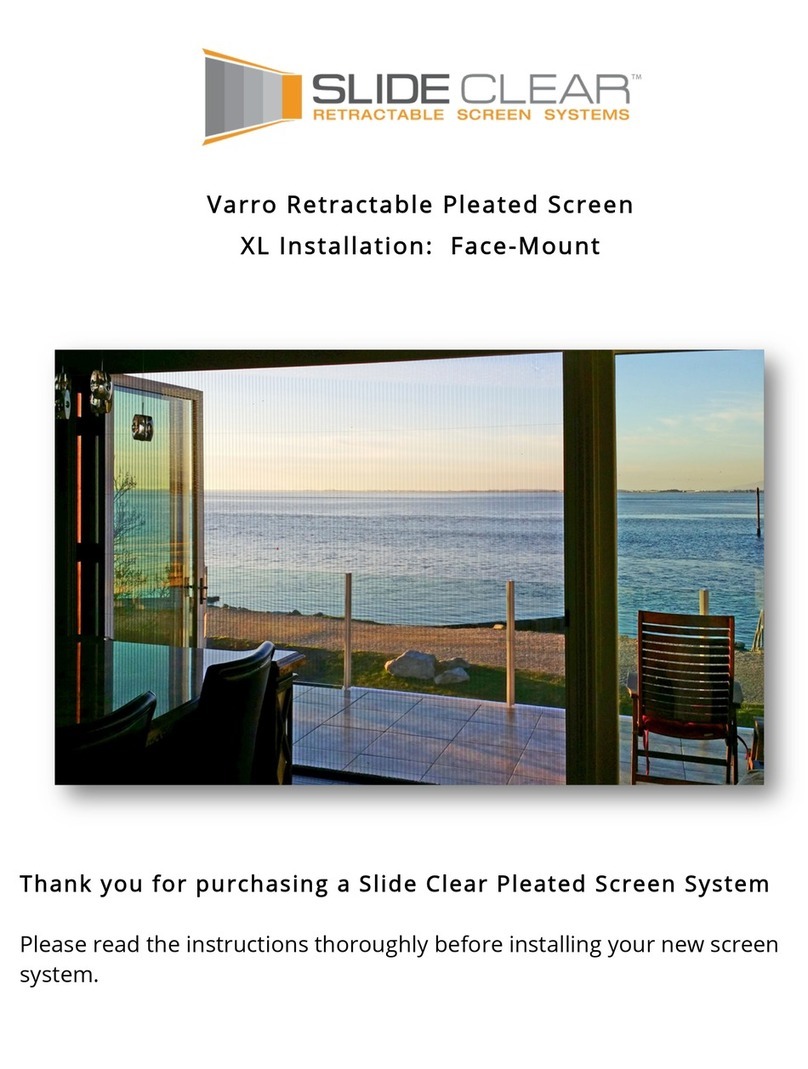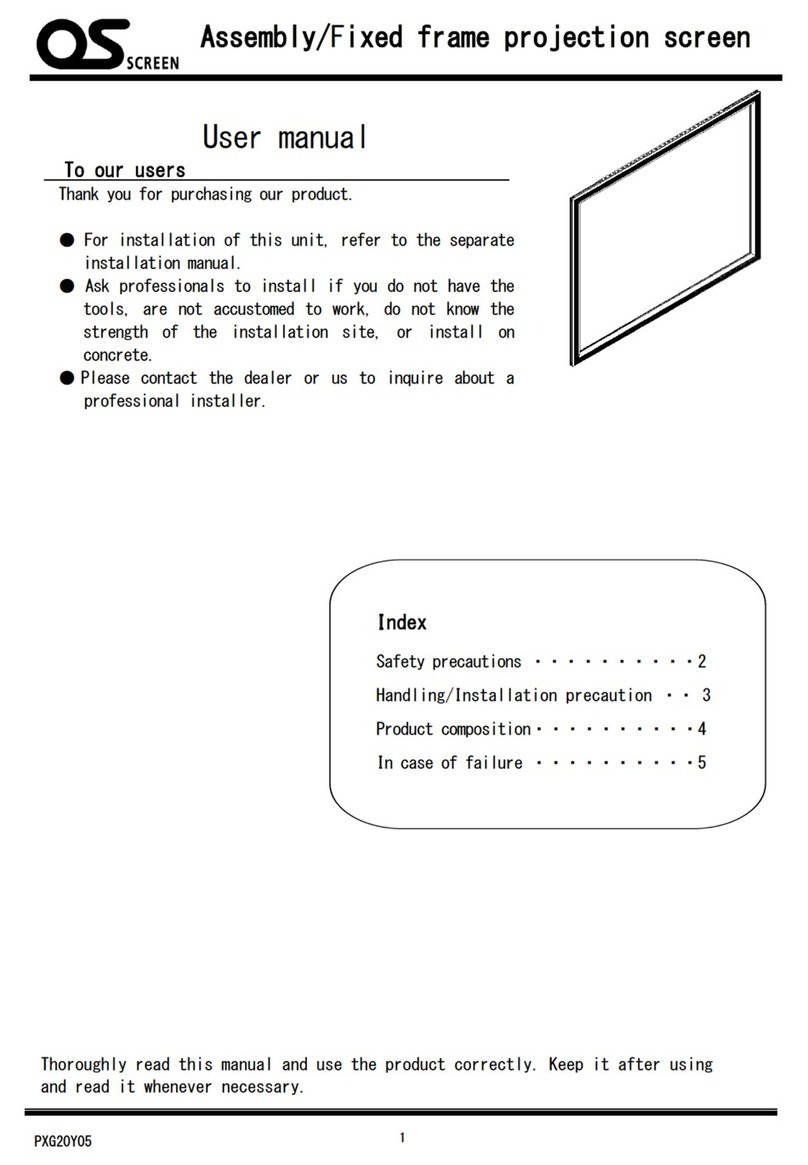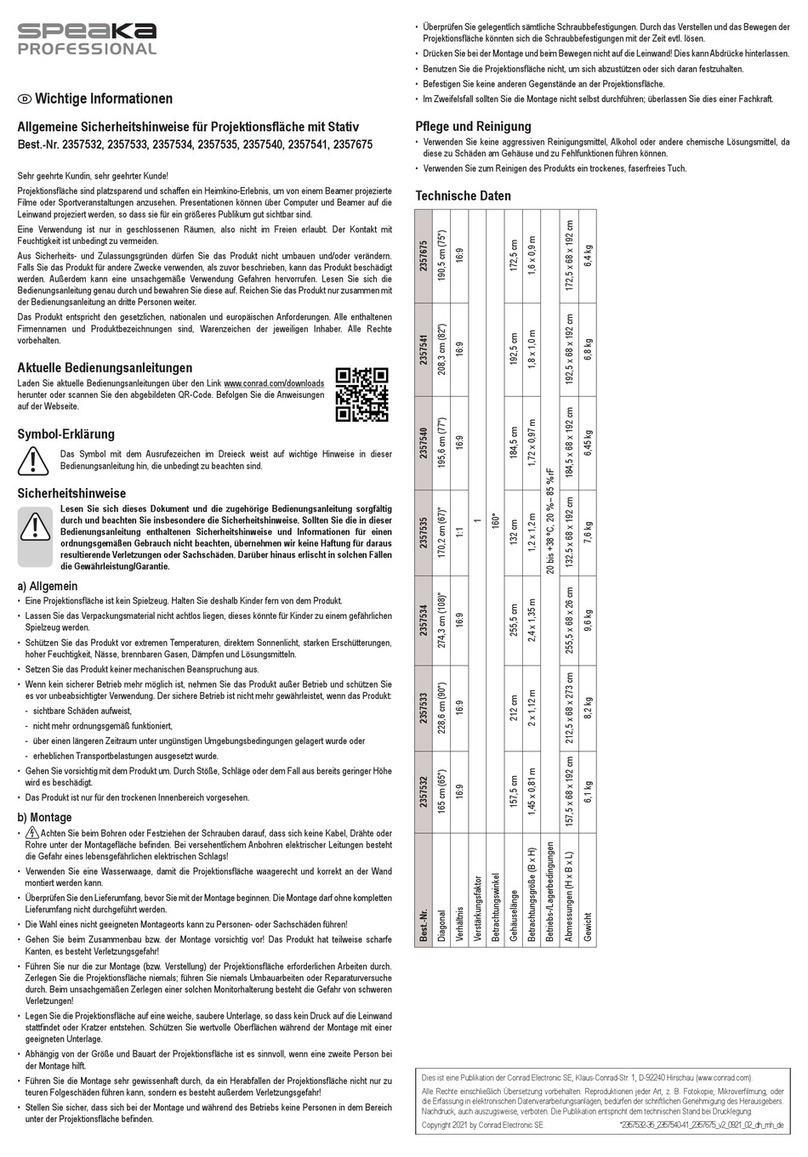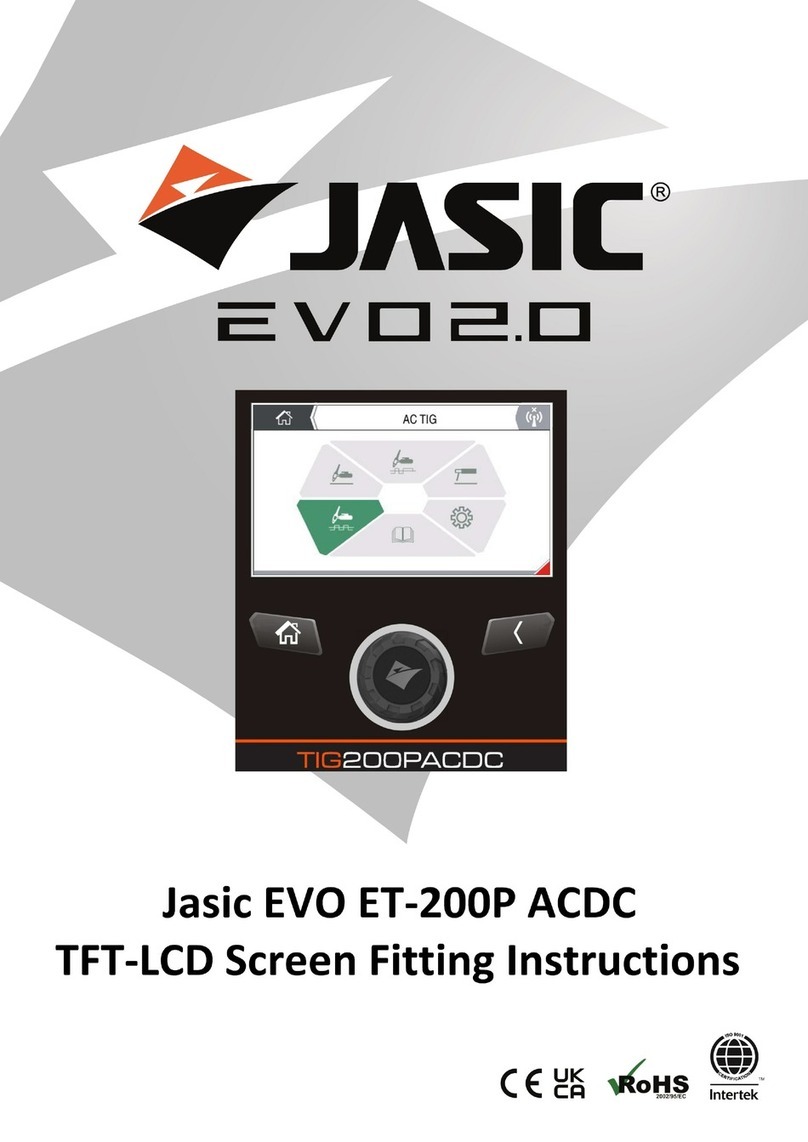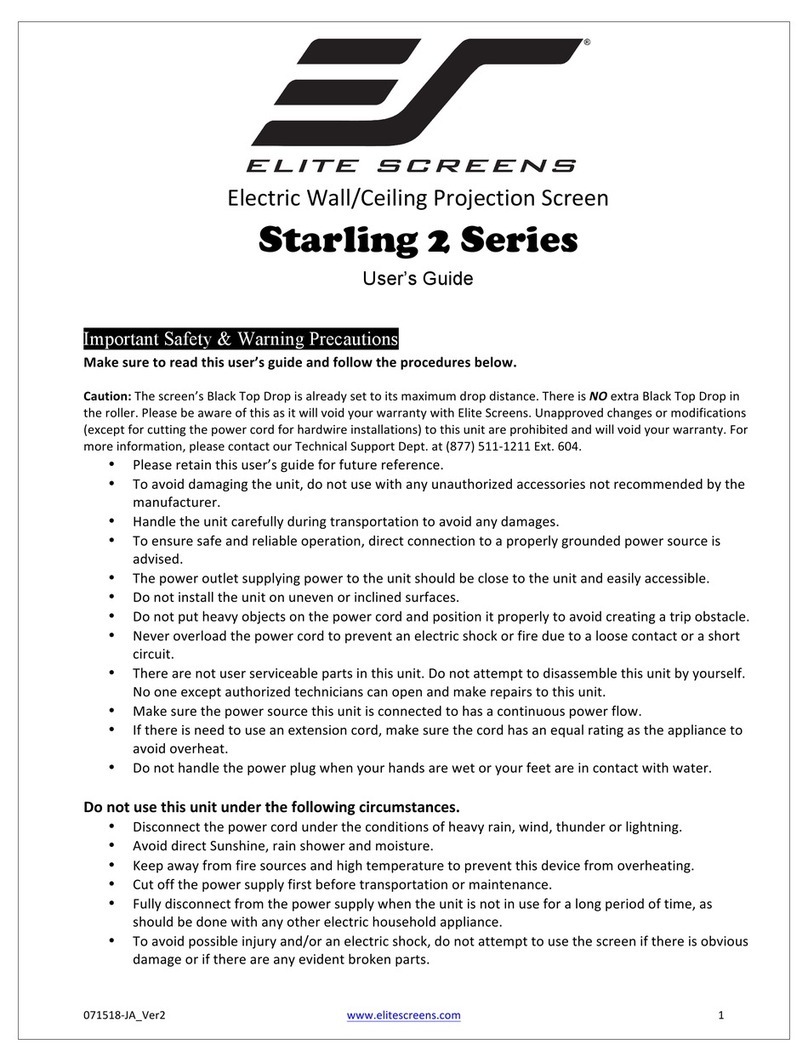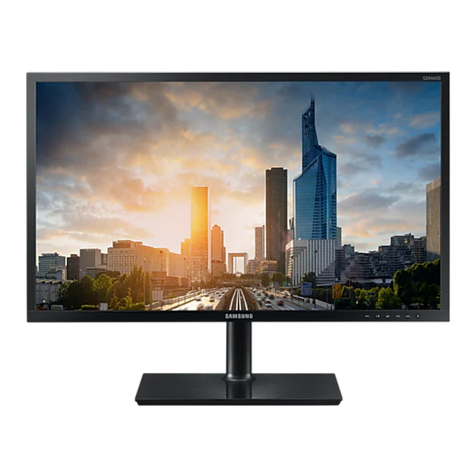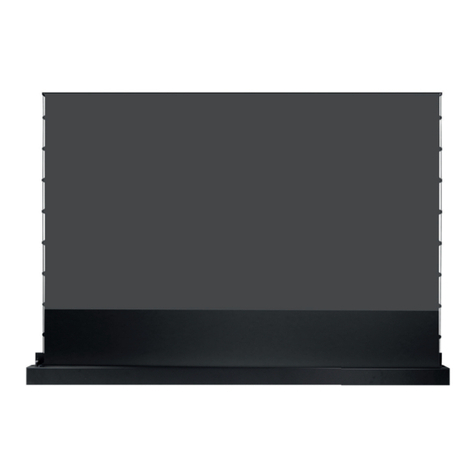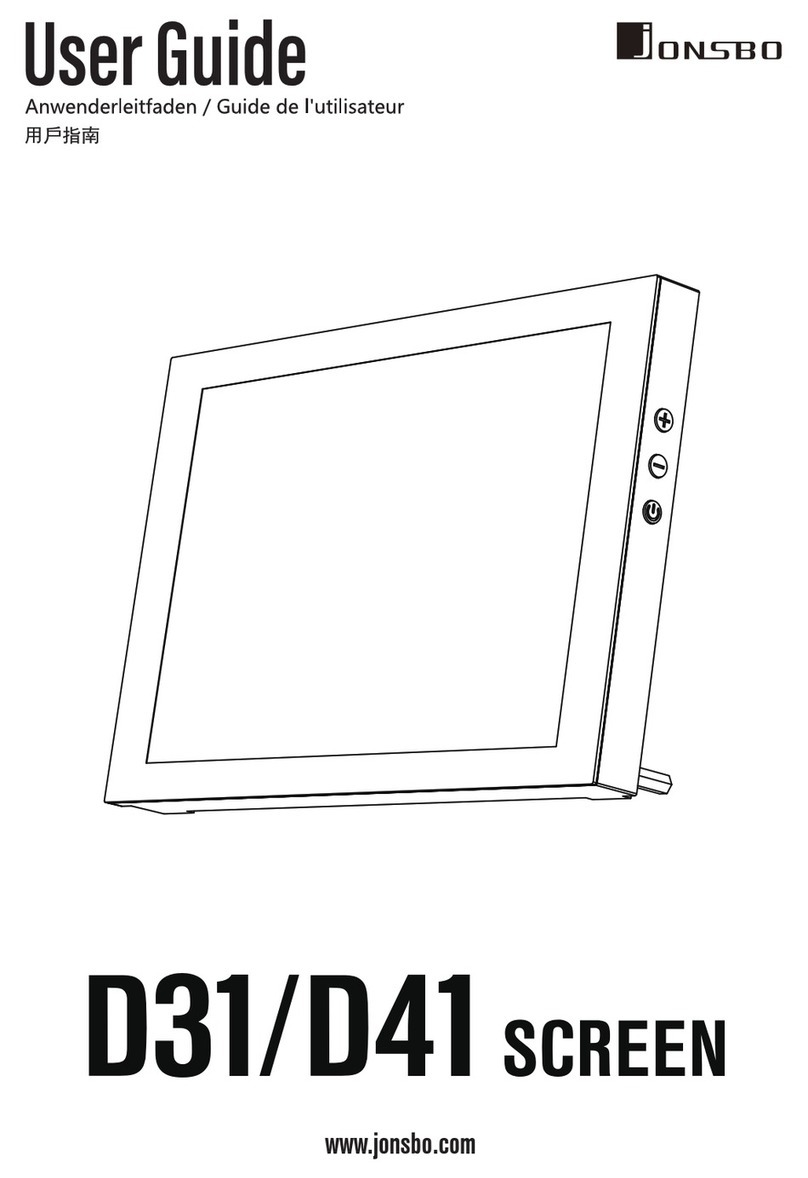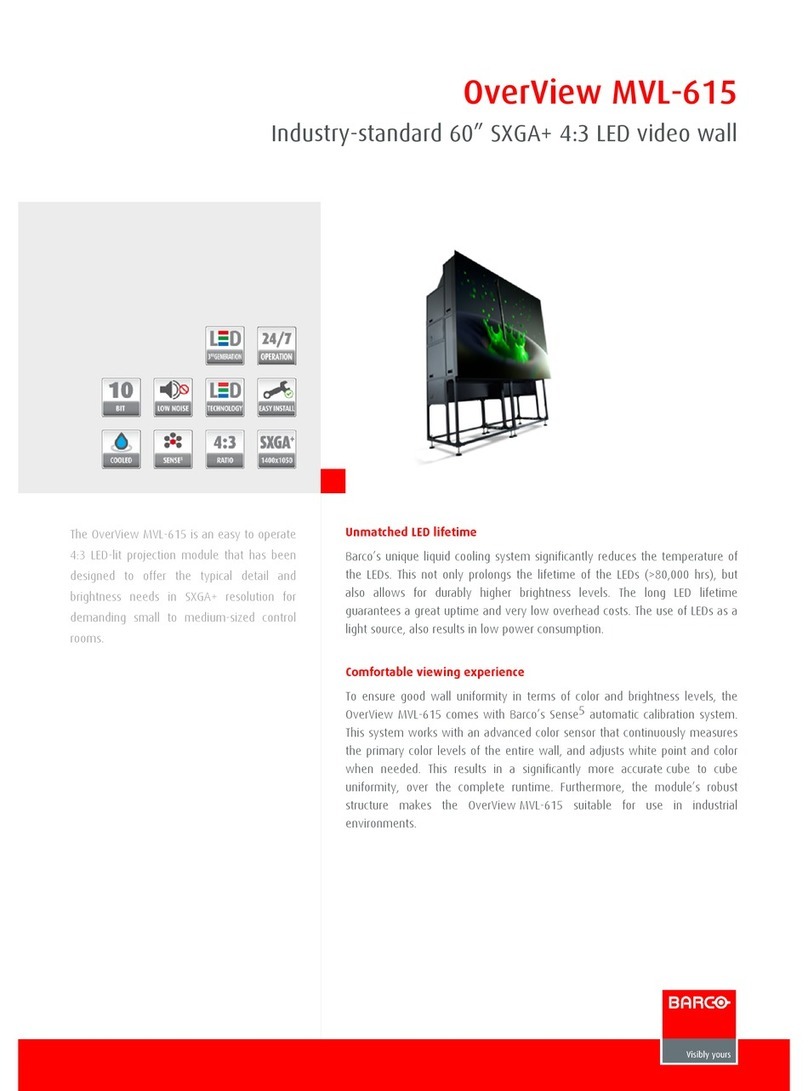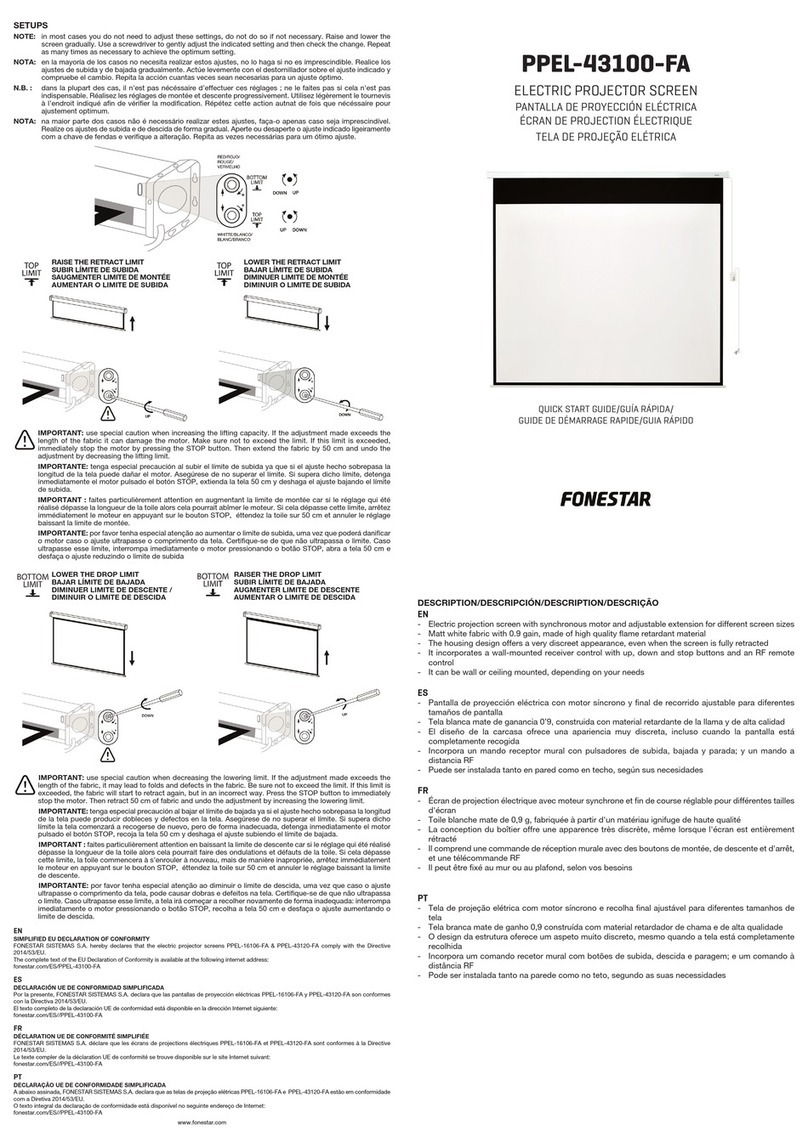
Motorized Roller/Fabric Installation
Please note:
When ordering a motor with internal Low Voltage Controller, if
the case ships separate from the "guts," the case includes the 25' cable and
special low voltage switch.
1
The bottom access panel must be removed first. (Pg 1, Fig. 4).
2
The motor end mounting bracket has a metal
bracketwith snap ring for accepting motor head.
Back out the two set screws in bracket until they are
flush with top side of bracket.
3
To engage the motor end bracket flange above the
two channels in the top of the screen housing, rotate
the bracket approximately 45° counterclockwise to
allow the top surface of the motor bracket to rest flat
against the top inside of the housing.
4
Rotating the bracket clockwise until it is engaged
with the channels, slide it along the length of the
housing against the electrical junction box.
5
Engage idler end bracket (rectangular
mounting pad) in the same manner
asmotor end bracket and slide it toward
the opposite end of the screen housing.
Do not tighten set screws on this
bracket until the roller/fabric assembly is
installed, and centered in case.
Note: Step 6 requires two people to perform safely.
6
Locate the black washer and retaining clips attached to the
instruction sheet.
Raise the roller/fabric assembly up into the screen housing
and engage the head of the motor completely into the motor
mounting bracket, making sure the limit switch adjusting
knobs are visible from the bottom of the screen housing
(see fig. 8). If snap ring is provided, make sure the snap ring
engages with the motor. If retaining clip is provided instead,
install to lock motor end in place.
7
While supporting the idler end of the roller, slide the idler end
mounting bracket toward the roller. Insert the roller pin into the
nylon bushing on the idler end mounting bracket.
8
The roller idler pin needs to go through the idler bracket far
enough to allow the washer and retaining clip to be reinstalled
on the pin.
CAUTION: Failure to replace the washer and retaining clip could result in
the separation of the roller from the brackets.
9
The roller/fabric assembly and roller brackets may need to be slid left or right in
the mounting channel of case to center fabric within screen case.
Securely tighten the set screws on roller mounting brackets.
Connect the electrical plug from the motor to the mating socket on the junction box.
Reinstall the bottom access panel as previously described.
Access Fit page 2 of 4
Limit Adjustments (Standard/Quiet Motors)
Please Note: Screen limits are factory set for optimum performance of the
screen. A procedure is outlined below for minor tweaks, but any adjustment of
these limits may negatively affect the flatness of the screen surface and could
also void the warranty. Please check with Draper prior to resetting screen limits.
CAUTION: Always be prepared to shut screen off manually when new
adjustment is being tested. Screen may be severely damaged if viewing
surface is allowed to run too far up or too far down.
CAUTION: Be sure all switches are in “off” position before adjusting limit
switches. The motor limit screws are normally located on the audience left of
screen roller.
Please Note: If Access Fit E/V is “Right Hand Motor” or “Waterfall”, the WHITE/
DOWN (I) and YELLOW/UP (II) limit screws are reversed. See graphic below.
Standard/Reverse Roll
Left hand motor
White Socket—Down
Yellow Socket—Up
Right hand motor
White Socket—Up
Waterfall Roll
Left hand motor
White Socket—Up
Yellow Socket—Down
Right hand motor
White Socket—Down
Standard Roll
Audience
Side
Waterfall Roll
Motor
End
Audience
Side
Reverse Roll
Motor
End
Audience
Side
Motor roller
assembly
Retaining
clip
Washer
Idler end roller
mounting bracket
Motorized Roller/Fabric Removal
Reverse the instructions above “Motorized Roller/Fabric Installation” for
removal of the unit.
Operation
When screen is first operated, be cautious! Cycle unit down and up several
times to confirm satisfactory operation. Be prepared to cut POWER if
necessary.
110-120V SINGLE STATION CONTROL: 3-position UP-OFF-DOWN switch permits
operation to be stopped at any point. Factory adjusted limit switches automatically
stop screen when fully down or fully up.
110-120V MULTIPLE STATION CONTROL: Switches are similar in appearance
to 110-120V Single Station Control. Screen stops when switch is released and
may be restarted in either direction. Factory adjusted limit switches stop screen
automatically when fully up or fully down.
24V CONTROL: Three-button UP-STOP-DOWN switches stop at any point desired,
operate in any sequence. Factory adjusted limit switches automatically stop screen
when fully up or fully down.
110-120V & 12V VIDEO INTERFACE CONTROL: Allows screen to be controlled
by trigger signal—when the signal comes on, the screen descends automatically.
KEY OPERATED SWITCHING: Optionally available with this unit. The key-operated
power supply switch controls power to the screen and switches. When it is “off”,
the switches will not operate screen. Key may be removed from the switch in either
“on” or “off” position.
RS232 / ETHERNET: Serial communication and network communication optionally
available.
Motor End
Retaining Clip
Set ScrewsMotor End
Mounting
Bracket
Tab-Tension Adjustment Procedure
Draper’s Tab-Tensioning System is factory-
set, and under normal circumstances will
not require field adjustment. If, however, you
notice wrinkles, waves or other indications
that the tensioning cables need to be
adjusted, follow the procedure below.
1
Determine which side requires
adjustment.
2
Secure dowel with one hand.
3
Using Phillips-head screwdriver,
depress spring-loaded adjustment
screw and slowly turn CLOCKWISE
TO INCREASE tension, or COUNTER-
CLOCKWISE TO RELEASE tension.
The screw adjusts in 60° turn
increments. Adjust only one increment (60° turn) at a time.
4
If problem is not corrected, leave screen in position for 24 hours to allow
surface material to stretch into position.
5
If problem still is not corrected, repeat steps 2 and 3.
PUSH & TURN
CLOCKWISE
to INCREASE TENSION
PUSH & TURN
COUNTER-CLOCKWISE
to RELEASE TENSION
END OF
DOWEL
END OF
DOWEL
Figure 6
Figure 7
Figure 8
Figure 9
"Down" Limit Adjustment
To Reduce Screen Drop
1
Raise screen surface about 1' above desired setting and turn off.
2
Turn the WHITE/DOWN (I) limit screw clockwise (three screw turns = ½ roller
revolution).
3
Test by running screen down and repeat steps 1 and 2 until desired position is
reached.
To Increase Screen Drop
1
Run screen to the down limit.
2
With the down switch on, turn the WHITE/DOWN (I) limit screw counter-
clockwise (3 screw turns = ½ roller revolution) to increase drop.
3
Test by running screen up about 1' and back down to new down limit.
4
Repeat steps 2 and 3 until desired position is reached.
"Up" Limit Adjustment
Screen is Running Too Far Up:
1
Lower screen surface about 1' below desired setting and turn off.
2
Turn YELLOW/UP (II) limit screw clockwise (3 screw turns = ½ roller
revolution).
3
Test by running screen up.
4
Repeat steps 1 through 3 until desired position is reached.
Screen Needs to Run Up More
1
Run screen down about 1' and turn off.
2
With the up switch on, turn the YELLOW/UP (II) limit screw counterclockwise
(3 screw turns = ½ roller revolution).
3
Repeat steps 1 and 2 until desired position is reached.
CAUTION: Do NOT
allow the dowel to wrap
up over the roller when
the screen is running up!
This could damage the
screen.

